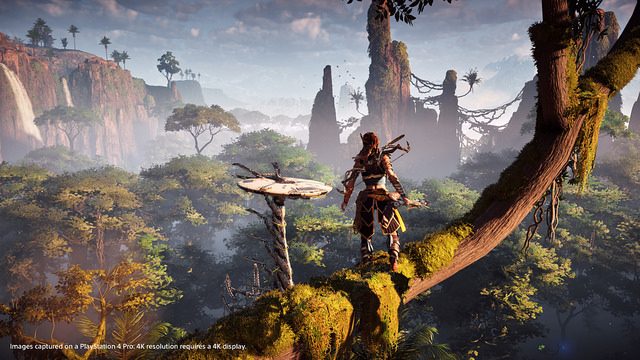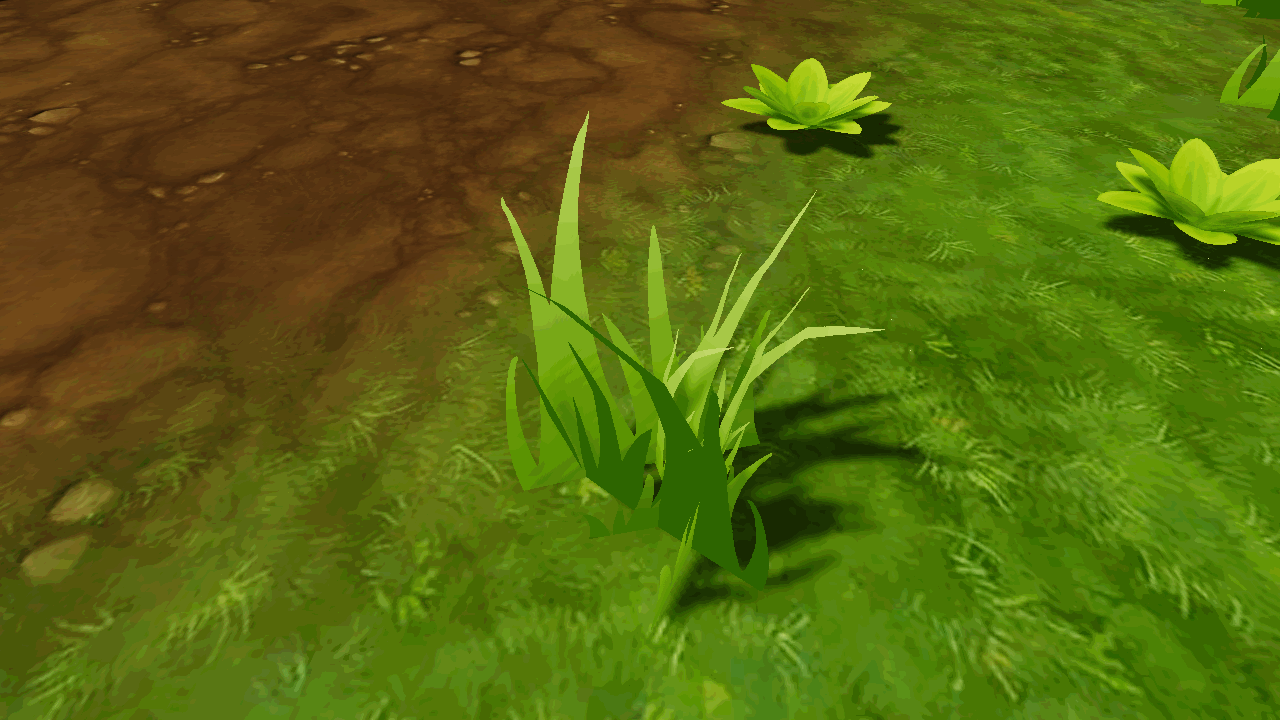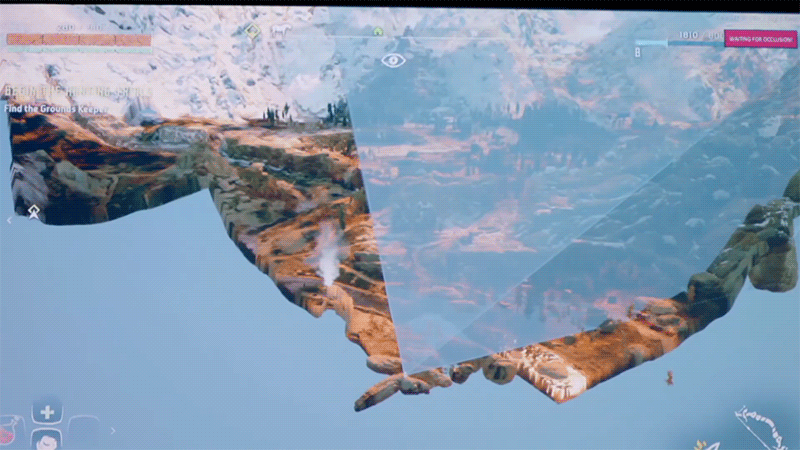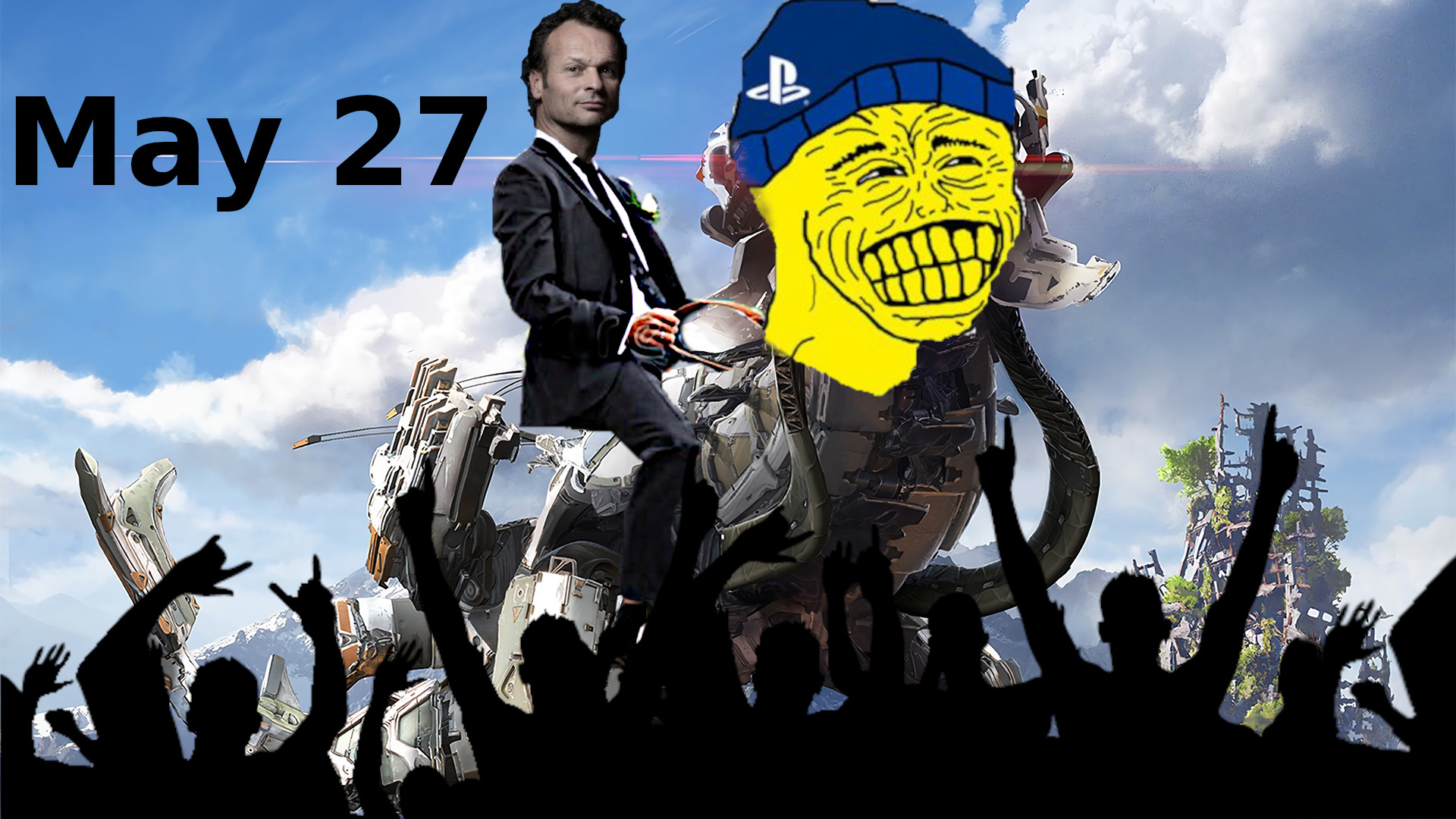{Guerrilla can do "flight" in Horizon...}
You can glitch the original Horizon (on PS4 even) and get above the world, and the loading/data-management system still holds up. Guerrilla has stated that flight didn't make the cut in the first game (supposedly? this comes up all the time but I've never actually seen the quote get shared...), but that was over three years ago on a debut product line. Developers learn a lot when making a game and know how to push sequels harder, even on the same hardware.
That's because the flight speed is the same as the ground speed which is why it holds up. I think they had said they couldn't fly as fast as they wanted or something like that.
Maybe. This example is limited and not a perfect demo. After all, it's a beast accidentally walking on air, not "flying".
But the Horizon Flying Glitch demonstrates some aspects of the engine (not just "hey, toldyaso, that's flyin'!!") that show latitude Guerrilla could build on if they added flight to the sequel.
There are a number of factors developers would nee to worry about in doing flight in an open-world game like Horizon. One would just be pure asset preparation for visibility in verticality. Games tend to be built for what you're meant to see when you play; if you break the boundaries of what's in front of you, sometimes you see that much of the game world is actually like a film set, with facades of buildings and no roofs on structures. This being an open-world with mountains and trees you can climb and look down upon the world, Guerrilla had to deal with a lot of vertical aspects of the game, even though there was not expectation you'd actually be able to get up there.

But it's not just that they need to put a roof on a building, that's easy. You also need to worry about verticality not expected from the vegetation. Those flowing fields of grass and flowers, they're not actually flowing fields, they're surfaces with a shader applied to give them density of an asset laid on top. That asset is usually 2D (I don't know Horizon's mix of 2D, 3D and particles, so correct me here if need be) and it holds up visually even as you crawl through it up close because the design of the asset and the density of placement creates a convincing field effect when close or at optimized angles. And then far away, it doesn't need to hold up perfectly either because you're not radically changing the viewing angle. If you're a quarter-mile away, moving 20 feet left or right doesn't change what you're looking at much. When you fly over a surface, though, you are constantly redefining the angle, and putting it to a torture-test of looking straight down on a surface made to be looked at side-on. Sometimes a great-looking field of grass when you're crawling through it or running towards it from afar suddenly looks like a green patch with paper cutouts glued all over it when you look down at the wrong angle.

(A typical grass asset, not Horizon of course)
Then there's load management and the procedural vegetation system. The world needs to be loaded in time for you to see it. As much of it as possible needs to be there to fill the visible range you have at your viewpoint, and then the details need to come into focus as you get closer as fast as you move. Flying would pretty much be the ultimate stress test of both visible range and speed of movement. You see everything that the eye can see, you move as fast through the air as a bird, and you can go from looking at the ground moving under your wings to up in the clouds looking down on it all. That's a lot.
The Horizon Flying Glitch shows the world keeping together when viewed from on high, which probably could be expected given the heights you can see the world from, but is still a relief that it holds up. There's a LOT in Horizon, and the engine is designed to take advantage of literally slow movement speed as Aloy looks around...
(Horizon's loading system.) (Yes, this GIF again...)
With the Horizon Flying Glitch, speed is limited, in that the animal only moves so slow and you're on a mount that you cannot control swoop up or down. We can look at other videos to see how well Horizon 1 handles speed though when transitioning from a high/far vantage to right on ground level (you can also
dismount from a flying mount and feel speed the hard way...) From what we're seeing in these instances, my take is that the land and buildings and big natural elements like trees and rock features are all loading about as well as you could hope, no terrible pop-in yet where the loading just collapses under the unexpected demand. And as far as density of assets and detail of vegetation, that seems to hold up too. You do get pop-in/fade-in of weed on rocks and little stuff like that, and the switch from low-quality assets to high-quality is visible as you cross certain thresholds, but the details are like the people walking around down in the city and the moss on rocks or lillypads on water remain in view and come into full detail properly as you rapidly move from far above to falling on top of them. (The
fast-travel system also helps see how rapidly areas can be brought in as needed, although I believe these are locked to the biome you're inhabiting, so in flight, crossing biomes would potentially be a much bigger problem than just hovering around the areas of the biome you're in, and would probably be kept as a limitation; it's also a gameplay problem if you can just fly over everything, so even on PS5, don't expect to fly everywhere you want.) Overall, the Horizon 1 engine keeps up under extreme, unexpected stress.
...And that's all just by mistake! Horizon 1 from 3 years ago accidentally worked okay with "flying" and "swooping", and that's an old version of the engine that the developers said (supposedly?) could not handle flight. Imagine what they can do with improved versions of that technology with a second go-around...
















